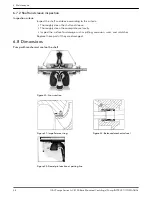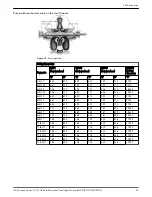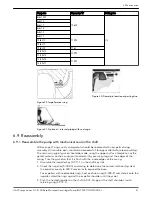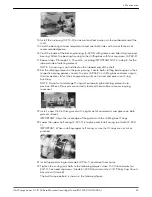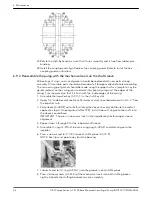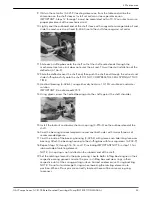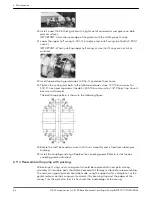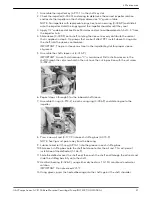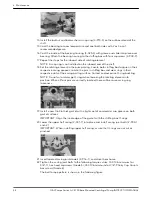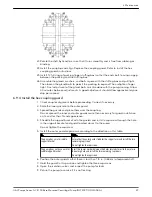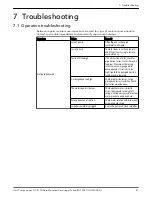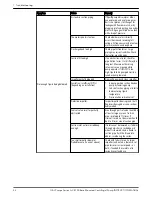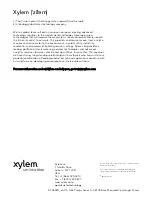
Symptom
Cause
Remedy
Not enough liquid being delivered
Air leaks in suction piping
If liquid pumped is water or other
non-explosive, and explosive gas or
dust is not present, test flanges for
leakage with flame or match, or by
plugging inlet and putting line under
pressure. A gauge will indicate a leak
with a drop of pressure.
The motor speed is too low.
Check whether motor is directly
across-the-line and receiving full
voltage. Or frequency may be too low;
motor may have an open phase.
Discharge head too high
Check pipe friction losses. Large
piping may correct condition. Check
that valves are wide open.
Suction lift too high
If no obstruction at inlet, check for
pipe friction losses. Static lift may be
too great. Measure with mercury
column or vacuum gauge while
pump operates. If static lift is too
high, liquid to be pumped must be
raised or pump lowered.
Impeller partially plugged
Dismantle pump and clean impeller.
Cavitation; insufficient NPSH
(depending on installation)
1. Increase positive suction head on
pump by lowering pump.
2. Sub-cool suction piping at inlet to
lower entering liquid
temperature.
3. Pressurization suction vessel.
Defective impeller.
Inspect impeller, bearings and shaft.
Replace is damaged or vane sections
badly eroded.
Foot valve too small or partially
obstructed.
Area through ports of valve should be
at least as large as area of suction
pipe — preferable 1½ times. If
strainer is used, net clear area should
be 3 to 4 times area of suction pipe.
Suction inlet not immersed deep
enough.
If inlet cannot be lowered, or if eddies
through which air is sucked persist
when it is lowered, chain a board to
suction pipe. It will be drawn into
eddies, smothering the vortex.
Too small impeller diameter.
Probable cause if none of above)
Check with factory to see if a larger
impeller can be used; otherwise, cut
pipe losses or increase speed — or
both, if needed. Be careful not to
seriously overload drive.
7 Troubleshooting
52
G&L Pumps Series A-C 8100 Base Mounted Centrifugal Pump INSTRUCTION MANUAL

